Stolen Identity
www.rijkeboer.com
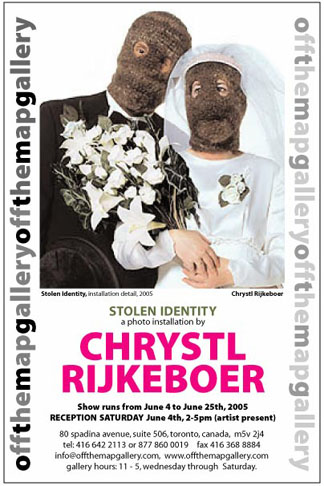
CHRYSTL RIJKEBOER's Stolen Identity at Offthemapgallery
a photo installation
Director & curator: Antonia Lancaster
Opening Reception:
Saturday, June 4, 2 - 5pm (artist present).
Show runs from June 4th - June 25th,2005
80 Spadina Avenue, 5th floor
Toronto, Canada M5V 2J4
Gallery Hours: Wednesday through Saturday, 11am to 5pm
CHRYSTL RIJKEBOER: The theme of this project: ‘Hair’ is an important issue of our identity. Through our hairstyle we conform to a group and underline our style. Changing- or covering our hair is expierienced as an important personal decision. To cover, cut, or shave hair involuntarily, will be experienced as a humiliation. It takes somebody’s identity away. Covering or cutting the hair by force has all to do with power and misuse of power. For example: scalping by the indians, the shaving of the heads of the girlfriends of the Germans (the so called Moffenhoeren) after WOII, the duty to wear a burka, but also the army, an institute which doesn’t tolerate identity and personal opinions. By cutting the hair everybody becomes similar or gets stigmatized. By involuntarily hair-cuting, ones pride will be hurt seriously.
PHOTOS:
In this time of war, intolerance and terrorism, many are prepared to join an ideological-criminal organisation. They are even prepared to die for that purpose. The ideal is their cause and the group their life. Being associated with such organisations one has to give up its identity, by literally puting a hood over the head. The higher cause for which one sacrifices oneself, takes away the possibility to show who you are and what you stand for. The hood or balaclava deprives these people their identity and pride.
The balaclava is a signal for society: ‘Watch out!, danger!’. When a terrorist is captured or killed, the media show us who these people are, their uncovered faces. Ordinary men and women, who lived an ordinary life before or besides the cause that took their personal identity and life. We only can’t see ordinary people anymore, only criminals, because we are aware of their deeds. Our prejudice ‘colors’ our opinion.
With the series of photographs ‘Stolen Identity’ I will reverse this phenomenon. I portray ordinairy people by taking away their identity through a balaclava. I start this project with photo’s: a family portrait, a wedding picture, a pregnant woman. Precious photo’s one usually frames or sticks in an album.
By hiding the faces with the balaclava, I’ll take away these people’s pride. And what will the spectator see looking at these photo’s? How prejudiced is his view?
FILM:
The film shows a hand with scissors cutting of people’s hair roughly and spin this into threads, changing hair into a product. Together with the photo’s of the people wearing balaclava’s, made of this product ‘human hair’, I ‘ll show two ways of taking away ones dignity.
By showing ordinary people in ordinary situations and by blowing these up literally, the reality becomes frightening. This is the way the media works: By showing situations and placing them in a context, by showing us what and how they want us to see and believe, the media creates it’s own reality.
WORK:
The theme of my work is astonishment about human life.
Key point is the life-cycle: from birth and innocence’, till development to maturity and guilt. Into my works I emphasize the concepts; influencing and consciousness raising.
My work is figurative and recognisable but shape and proportions are not necessarily correct or ‘beautiful’, what matters is the sensation they evoke. You can always view my work in two ways: kind, pleasant and innocent, or frightening, condemning and guilty.
The reason I work with human hair is that hair has symbolic significance: beauty, strength, health, attraction, etc. The moment it is separated from the human all these factors turn around, hair is considered dirty, unsavoury and dead. Hair is also an important indicator of our life, as well in the past as in the present.
- Hair shows us when we reach maturity (pubic-, chest- and armpit hair) and also shows us when we reach the menopause (we become grey and bold).
It shows our age and health.
- With our hair/hairstyle we emphasize our identity.
- Hair has always been a hot item at spiritual/religious- and at social issues.
For example: in fairytales and legends, in women’s oppression, in the persecution of the Jews, as acts of protest against the prevailing standards and nowadays in the dilemma of the headscarf related to moslim-fear.
My work is developing more into my vision about the vulnerability of the human, both physical as psychological. By the way we are influenced and manipulated in life, and by our opinions and our surroundings (our environment, the media and the globalization of the world).
My greatest source of inspiration is everyday life; my personal point of view compared to the public opinion, represented by television, the news and the newspapers, to put it briefly, how it is interpreted and manipulated by the media.
Working with human hair made me aware of the knowledge that each hair contains the DNA of an individual person, which I manipulate very literally in my own, personal way.
Chrystl Rijkeboer was born in Velsen, The Netherlands in 1959 and from1994-1998 attended the Willem de Kooning Academie in Rotterdam. Graduated in 1998 Autonoom 3D and now lives and works in Haarlem.
Chrystl Rijkeboer
Smedestraat 9
2011 RE Haarlem
The Netherlands
HYPERLINK "http://www.rijkeboer.com/"www.rijkeboer.com
HYPERLINK "mailto:c@rijkeboer.com"c@rijkeboer.com
For further information contact Antonia at:
Tel: 416 642 2113 or 1 877 860 0019
email: info@offthemapgallery.com
web: www.offthemapgallery.com
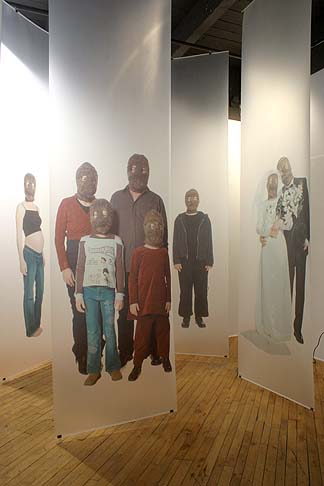
STOLEN IDENTITY, 2005, installation view, Chrystl Rijkeboer
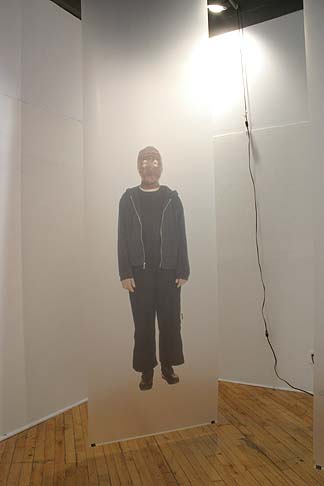
STOLEN IDENTITY, 2005, installation detail, Chrystl Rijkeboer
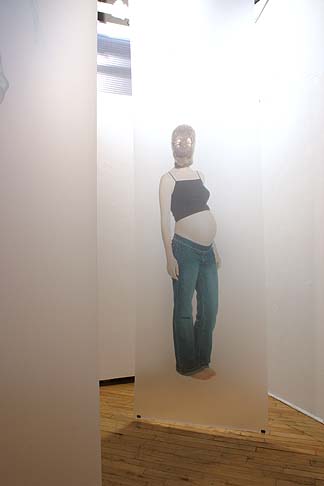
STOLEN IDENTITY, 2005, installation detail, Chrystl Rijkeboer
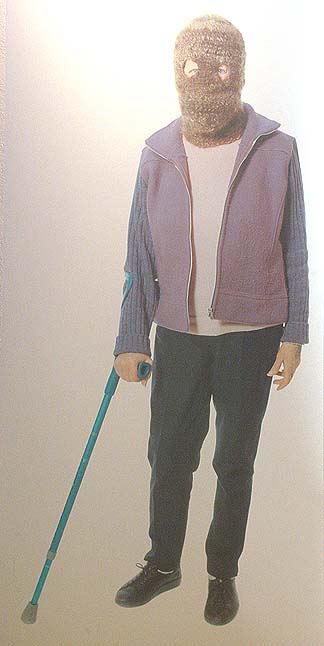
STOLEN IDENTITY, 2005, installation detail, Chrystl Rijkeboer
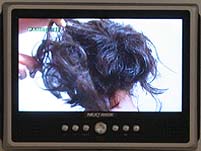
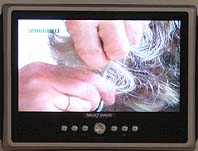
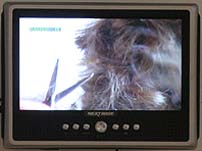
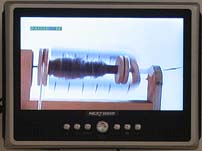
STOLEN IDENTITY, 2005, installation video details, Chrystl Rijkeboer




























